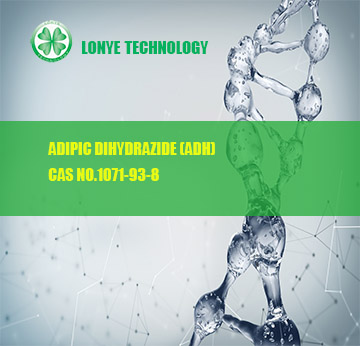Products
Adipic dihydrazide (ADH) CAS NO.1071-93-8
Source: Date:2018-12-20 16:27:27 Visits:

Product presentation
Product name: Adipic Dihydrazide (ADH);
CAS NO.:1071-93-8;
Molecular Formula: C6H14N4O2;
Features:
The Superiority of the Diacetone Acrylamide (DAAM) and Adipic Acid Dihydrazide (ADH) Crosslinking System
CAS NO.:1071-93-8;
Molecular Formula: C6H14N4O2;
Specification:
Appearance:Light yellow or White crystals ;
Melting point: 173-185℃;
Purity: ≥99.0% ;
Water: ≤0.5% ;
Ash: ≤0.01%;
Free hydrazine: ≤20 ppm;
Free methyl alcohol: ≤0.1%;
Fe: ≤ 0.0005%;
Chloride(as Cl):≤ 0.005%;
Sulfate(as SO4): ≤ 0.005%;
Packing: 20KG/ Carton, or according to customer's requirement;
Features:
1 ADH is a crosslinker of waterborne acryl emulsions.
2 It is also useful as an epoxy resin hardener and a formaldehyde scavenger.
3 ADH reacts very rapidly with ketone groups. For example, it reacts easily with ketone groups of diacetone acrylamide or aldehyde groups of formaldehyde.
4 ADH also reacts with the epoxy group like an amino compound.
Application:
---Room temperature crosslinkable waterborne coatings;
Acryl emulsion comprising acryl monomers and diacetone acrylamide crosslinks with amino groups of ADH very rapidly. The coating has excellent water resistance.
---Epoxy resin hardener ADH reacts with epoxy resin at high temperature and is useful for powder coating.
---Reforming of plastic Fiber processing;
Thanks to environmental regulations limiting volatile organic compounds (VOCs) and major improvements in the performance characteristics of the emulsion-based products, aqueous acrylic polymer emulsions are replacing solvent-based polymer systems.










